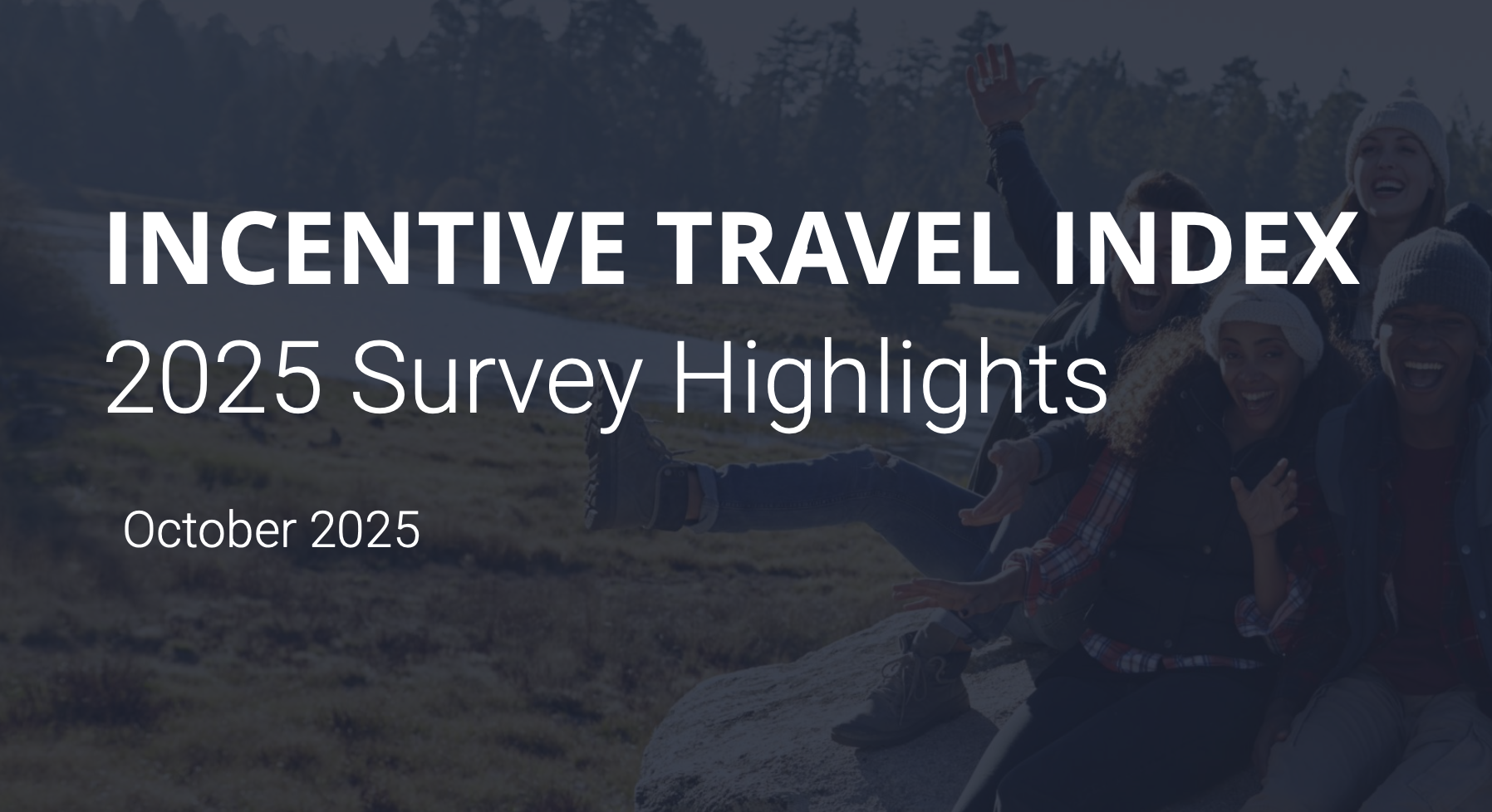The incentive industry is adapting to today’s realities of escalating costs and geopolitical risks, as well as evolving workplace values, according to new IRF/SITE research.
The incentives industry, generally known for over-the-top experiences, is focusing more on stability than exuberance these days, with predictions for modest growth and flattened optimism through 2027, according to the 2025 Incentive Travel Index (ITI), a joint initiative of the Incentive Research Foundation (IRF) and the Society for Incentive Travel Excellence (SITE) that was launched at IMEX America in October.
The most-cited top challenge, both long- and short-term, facing incentive travel professionals is rising costs/inflation, the research found. Average incentive program per-person costs have risen 4% year over year in 2025, to $5,100 globally and $6,000 for North American buyers, mainly due to higher hotel, airfare and food and beverage (F&B) costs — with more increases expected in the near future in hotel (49%), airfare (46%) and F&B (45%). While average program budgets have inched up about 5%, cost inflation is outstripping these increases — planners routinely report that their budgets haven’t kept pace with the rising cost of travel services and goods. This means planners must work harder to find value and negotiate deals.
“While 75% of respondents agree that the value of incentive travel remains strong, they also say the business gets tougher every year,” said Stephanie Harris, IRF President. “Incentive professionals are under pressure to deliver more with less — without compromising quality or impact.”
With costs rising faster than budgets, planners are looking for ways to do more with less by decreasing spend in gifting (28%), talent/décor/entertainment (25%) and the number of participants (23%). While planners are trimming budgets for gifts, merchandise and in some cases, entertainment, they are redirecting resources into upgraded accommodation, curated activities and overall experience quality so they can deliver exclusive experiences that also appear responsible and relevant, balancing ROI with duty of care and participant comfort.
This means that, instead of focusing on luxury, incentive experiences will be leaning more into providing meaningful, purpose-driven experiences that balance exclusivity with experiences that are more closely aligned with today’s workforce values, the ITI found. One place this manifested in the research was the continued focus on sustainability as a key factor in destination and activity selection.
International stability also is gaining prominence as a short-term challenge, rising to 30% from 18% last year. U.S. inbound incentive activity declined sharply this year, with 70% of respondents expecting further decreases due to political uncertainty and complex visa requirements. Other ways geopolitical risks are reshaping incentive travel programs and destination selection include a shrinking travel radius — companies are favoring short-haul trips and regional destinations over long-haul international travel. They’re also steering clear of destinations that are perceived to be unstable or risky, whether from a political, economic or health standpoint.
But they also are expanding their horizons. Around 70% of buyers said they are exploring new, often less congested or less volatile locales for their programs. Working with experienced destination management companies (DMCs) and local receptive agencies is seen as increasingly crucial for managing and mitigating regional risks.
“Buyers continue to seek out something new,” said Annette Gregg, SITE CEO. “Nearly 70% are seeking destinations they haven’t used before – and 63% already have new ones booked for 2026 or 2027. What hasn’t changed is what matters: direct air access, top-tier accommodations, and a trusted DMC remain top priorities.”
Today’s environment also means that strategic risk management is even more central as incentive planners put more emphasis on factors such as airline stability, weather and local safety perceptions. And they’re building in more flexibility in case they have to make last-minute changes due to a sharp increase in risk.
You May Also Be Interested In…
Exclusive: How White Lotus Is Supercharging Pop Culture Incentives












